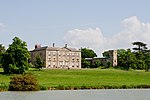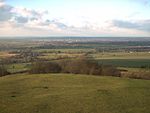East Claydon

East Claydon is a village and is also a civil parish in the unitary authority of Buckinghamshire, England. It is about 2+1⁄2 miles (4 km) south-west of Winslow. The village name 'Claydon' is Anglo Saxon in origin, and derives from the Old English: clægig + dun meaning 'clay hill'. The affix 'East' is used to differentiate the village from nearby Steeple Claydon and Middle Claydon, and from the hamlet of Botolph Claydon that lies within the parish of East Claydon. The parish church dedicated to St Mary was demolished during the English Civil War by Cornelius Holland, one of King Charles's judges, but was rebuilt after the restoration. The current structure is largely of 18th century design, but comprises components from various centuries, the earliest of which is the 13th century. East Claydon School is a mixed, community, nursery, infant and junior school, which takes children from the age of three through to the age of 11, when they generally move to a school in Waddesdon or Winslow. The school is quite small, with approximately seventy pupils.
Excerpt from the Wikipedia article East Claydon (License: CC BY-SA 3.0, Authors, Images).East Claydon
Sandhill Road,
Geographical coordinates (GPS) Address Nearby Places Show on map
Geographical coordinates (GPS)
| Latitude | Longitude |
|---|---|
| N 51.9241 ° | E -0.929 ° |
Address
Sandhill Road
Sandhill Road
MK18 2LX
England, United Kingdom
Open on Google Maps









